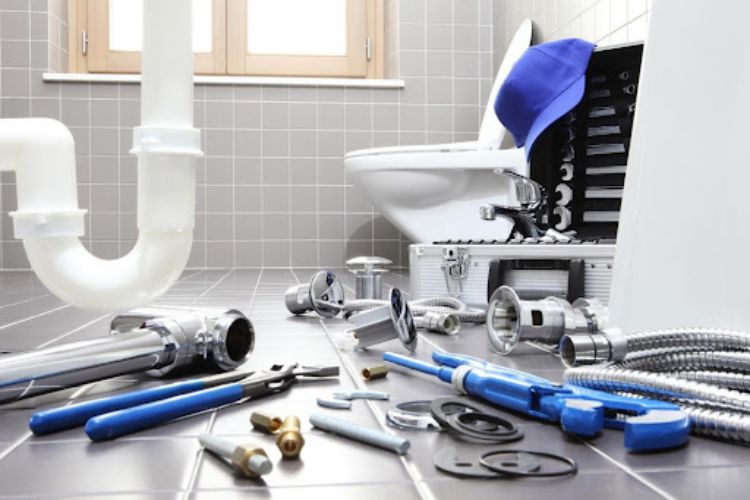 The average homeowner doesn’t understand their home plumbing system too well. As a result, they do things like pouring grease down the kitchen drain or using too much drain cleaner.
The average homeowner doesn’t understand their home plumbing system too well. As a result, they do things like pouring grease down the kitchen drain or using too much drain cleaner.
The actions above – and specific others – can damage your house’s plumbing and (or) septic system. It’s important to know what each part of your plumbing network does so you can understand how not to damage it.
Below is a quick rundown of your home’s plumbing system.
How Does My Home Plumbing System Work?
Your plumbing system has two main jobs: to bring you fresh water and dispose of wastewater. Freshwater enters your home from the source through pressurized pipes that send it to where it needs to go.
If you need cold water, it travels through the pipes to the cold water tap. Water that needs warming goes to the hot water heater.
A line empties cold water into the water heater tank, and the element (which can be gas or electric powered) heats the water. A thermostat manages the tank’s internal temperature.
The less-dense warm water cycles to the top of the boiler, and the internal pressure sends the liquid out of a pipe and to the hot water tap.
Meanwhile, the cold water left in the water heater is warmed, ready, and waiting for when you need it.
Understanding how your hot water heater works is essential. You can call for a boiler repair that much quicker if you know what an anode rod is.
An anode rod, by the way, is a piece of steel coated with magnesium or aluminum that keeps your boiler tank from rusting. A rusted tank is prone to leaking or sending rusty water to your tap.
Different Types of Plumbing Systems
A large part of plumbing is the disposal of wastewater and other materials from residential and commercial buildings. Each of these plumbing systems serves different functions and work uniquely from each other.
- Water Supply System: provides cleaning, bathing, and drinking water
- Stormwater Drainage: carries water from away the roof
- Venting and Drainage: removes wastewater gas buildup
- Sewage and Septic: removes used water from buildings
Your home plumbing and the water supply system are the same things. They provide you with water that you can reliably use for consumption and cleaning.
Keeping your water supply system in good shape can help you save money and avoid additional damage throughout your home. Leaky pipes can raise your water bill, and water damage can be hard to repair and dangerous.
Stormwater drainage is important because it keeps runoff away from your home. If too much water accumulates around your house, it can damage the foundation.
Venting keeps gas out of your plumbing. Trapped gas can flow back into your house and cause nasty smells. Blockages in your pipes can cause gasses to accumulate.
Sewage and septic drainage systems do more than fecal matter, urine other kinds of human waste. They also drain greywater, which is water from toilets, baths, showers, kitchen and bathroom sinks, and washing machines.
Brush Up On Your Plumbing Basics
Knowing how your plumbing works prevents future damage because you comprehend how everything works and how to maintain it.
Understanding plumbing also helps you deduce when something is wrong with your home plumbing system. If you know your hot water heater is damaged, you can quickly call to have it repaired.
Hopefully, this article taught you a little about how your home plumbing system operates.
If you want to learn more about plumbing or your house in general, there are plenty of posts to choose from in our website’s Home & Garden section.




